Introduction

Gary having a little fun on the flight line, back in the day.
This week’s guest writer is Gary Labanow. Gary and I have been friends since high school, in addition to having the shared experience of being United States Air Force Vietnam War veterans. Gary actually convinced me to join the Air Force back in the day.

Can’t work all the time!
After his military service ended, Gary eventually became a pilot, with an interesting and rewarding career in that endeavor. Over the years I have enjoyed hearing about Gary’s flying experiences, and viewing some of the photos and film from his flying days. (We both also enjoy fishing, and swap a few of those stories now and then) Gary has graciously shared some of his experiences with us.
Please enjoy Gary’s story.
MY LIFE AS A PILOT
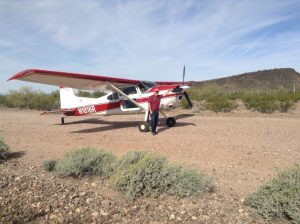
Gary enjoyed flying aircraft of all sizes.
I always had an interest in airplanes. I was 16 when I got a job pumping gas at the local airport and used my pay for flight instructions. When I was 17, I got my private pilot’s license and was the youngest pilot in Wisconsin. After high school I attended the University of Wisconsin Kenosha Extension. After a year of partying and not doing much studying I realized I was a bit immature for college, ok a lot immature for college. 1966 was a bad year to not be in college and with Uncle Sam looking my way I joined the US Air Force. I became an aircraft structural repair specialist and soon found myself in Southeast Asia.
After spending time in the Philippines, Thailand, and of course, Vietnam I decided I needed to get smarter quickly. After my discharge from Luke AFB, Arizona I went back to college, first at Phoenix College, then Arizona State University (Go Sun Devils) where I majored in mechanical engineering and continued to get more flight ratings.
After getting my multi engine, instrument, flight instructor and instrument instructor ratings I was hired by Lufthansa, a German airline, as a primary flight instructor. It was a great learning experience but I could never fly for their airline as you needed to be a German citizen. After a few years I left Lufthansa and was hired by Continental Airlines where I started my airline career flying as first officer on an ATR-42, a 50-passenger twin engine turboprop. It was a great flying airplane, fun to fly and after a couple years I upgraded to captain.
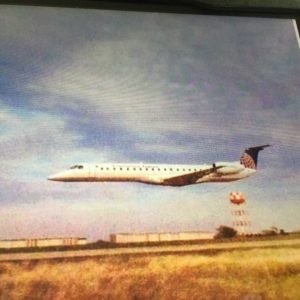
Embraer 145
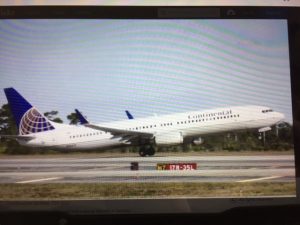
737-900
About this time airlines were moving from turboprop aircraft to all jets. I became captain on an Embraer-145, a 50-passenger jet. My dreams of becoming a jet pilot were finally realized. After a couple years I transitioned to the Boeing 737. My routes on the 737 covered the US, Canada, Mexico, Central and South America and the Caribbean Islands. I flew the 737 until my retirement at the mandatory age of 60. As fate would have it, about 8 months later they raised the retirement age to 65. So here I was staying home and enjoying retirement when one day my wife said, “I wish you still flew for Continental”. I innocently asked why to which she replied “because you’re home all the time.” She had gotten used to having alone time when I was gone 3 or 4 days at a time. I took the hint and at 60 years of age I began looking for a job. I wondered what I wanted to do when I grew up. I had some experience in construction estimating and in sales. I still loved to fly and wondered if any flying jobs were available.
My search brought me to an ad from Arizona Game and Fish for a Wildlife Pilot, whatever that was. They were looking for someone with low level flight experience and tailwheel aircraft experience. Not exactly my airline resume. The pool of applicants must have been small as I was called for an interview. I managed to not terrify the chief pilot on my check ride and got the Cessna 185 on the ground in one piece and thus began the most interesting and fun flying job imaginable.
THE LIFE OF A WILDLIFE PILOT

We flew all hours. (Cessna 185)
One thing they neglected to tell me when I was hired was, we needed to fly when the animals were most active. This is at first light. In Arizona summers first light is about 5am. Since many times we had to fly an hour and a half to the area we were to survey and we had to preflight the airplane that meant leaving home about 2:30am. This was NOT an airline schedule.
Most flights had one or two observers. These were either biologists or Wildlife Managers. Some states have biologists and Game Wardens. These Game Wardens are strictly law enforcement. Arizona Game Wardens are required to have a degree in biology or closely related field. They also go through a law enforcement academy. Thus, our Wildlife Managers are responsible for game management as well as law enforcement.
TELEMETRY FLIGHTS:
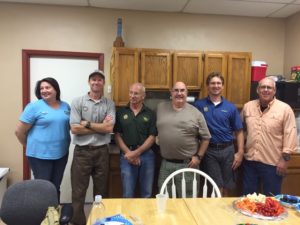
Great bunch to work with.
Telemetry flights are the easiest flights we do. Therefore, new pilots start by flying these flights for a couple months. These flights are done about 1500 feet AGL (Above Ground Level). Telemetry flights use an antenna on the airplane to track animals which have been fitted with a transmitting collar. These collars transmit information showing the movements the animal has made. We can see where these animals have been crossing roads allowing overpasses and underpasses to be constructed. This allows animal movements to continue over or under the roadway thus saving the lives of animals and people. We once lost contact with a black bear. We hadn’t heard his collar for 3 years when one day we picked up his signal. We downloaded the info and learned he had traveled 300 miles into New Mexico and back three times. Each time we looked for him he was vacationing in New Mexico. Telemetry can also be used to determine migration patterns and nesting areas showing water and habitat requirements. We have tracked elk, deer, antelope, big horn sheep, mountain lion, bear and wolves as well as condors, eagles and even bats.
SURVEY FLIGHTS
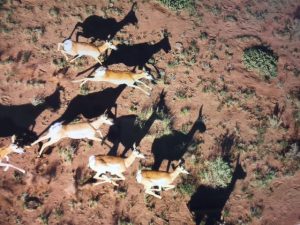
Photo from aircraft survey.
After a few months of telemetry flights without breaking an airplane I was trained in survey flights.
Survey flights are conducted following the terrain about 120’ AGL and flown as slow as safe for conditions. This requires constant vigilance looking for wires, towers or tall trees. Surveys are flown over a specific hunt unit in a grid pattern with legs ½ mile apart the length of the hunt unit. The observers would count and classify animals as bull, cow or calf (in the case of elk). Each animal species has specific characteristics when seeing the airplane. Antelope will bunch up then try to out run the plane. They are found in very open fairly, level terrain and line up in a straight line running making them the easiest species to survey. Deer are the hardest as they are in mostly forested areas. Trying to spot them under trees is hard and then turning the plane around and trying to determine exactly where it was to check for additional animals in the group requires a lot of practice. Elk tend to be in large groups, sometimes 150 or more. They are not bothered by the plane but sheer numbers can make counting difficult. In some instances, photos are taken for counts on a computer screen. We also survey javelin, big horn sheep, turkeys and sandhill cranes.
LAW ENFORCEMENT FLIGHTS

My office, Super Cub.
During hunt seasons we will look for hunters who have an animal down. We will then direct a WM (Wildlife Manager) to him where he will verify it was a legal kill. We would also conduct night flights looking for poachers using spot lights. If we saw someone spotting, we would guide ground personnel to them. These people would think no one was within miles of them then suddenly a truck, having moved to within about 50’ with lights off would light them up with red and blue flashing lights. At this time the poachers were totally surprised and totally shocked. Not all-night stops are tickets. One night a light was spotted moving along a trail through some trees. After guiding a WM to the location, it was determined the kill had been made just at dusk. After gutting the elk, the hunter had been dragging his elk for hours toward his truck. He said he’s been hunting for 30 years and never seen a Game Warden then almost midnight one shows up to help him drag and load his kill into his truck. Definitely a surprise.
SOME OTHER FLYING EXPERIENCES OF ARIZONA GAME AND FISH
UFO?

I swear, we weren’t lost! (courtesy Area 51 tourism, inc.)
Bill, Chief Pilot for the Arizona Game and Fish, spotted what appeared to be a large tarp flapping in the distance. He flew to check it out and found a parachute about the size of a house attached to a metal disk shaped object about the size of a two-car garage with six legs protruding and large metal pads on the ends. The thing had landed and pitched over onto one edge. Bill circled looking for markings, but there were none. He flew back to his office and called the US Weather bureau asking if they had lost some weather gathering object. They had not, but a few minutes later a call came back asking about what was seen and where it was. Bill asked who was calling and the reply was “The United States Government.” He gave them the info and decided first thing in the morning he would fly out and take pictures. The next morning, armed with a camera he got to the spot but all that was left were marks where the pads had indented the ground and where the edge had cut into the earth. Nothing more was ever heard about this.
DON’T GET HUNG UP!
On one desert deer survey our pilot spotted a buck mule deer hanging by his antlers from tree branches. He apparently jumped up to eat some leaves and got hung up. The pilot knowing the animal couldn’t live very long and not knowing how long he was caught the pilot landed on a small clearing about a quarter mile away. Our pilot and observer were able to have one grab his legs and the other climbed the tree, grab his antlers and free the deer that was still able to run off.
ANIMAL HUSBANDRY, ANOTHER PART OF THE JOB

He was a cute little fella.
One controversial program we flew was supporting the reintroduction of the Mexican Grey Wolf. This was a project with the US Fish and Wildlife Service. Many ranchers and hunters are not in favor of the reintroduction of this predator. Because of the need to protect against inbreeding wolves from other areas are needed. One of the times I was involved was when two three-day old pups were flown from a zoo in Chicago to Phoenix. I then flew the pups, along with two Fish and Wildlife biologists to a mountain area in Arizona. These biologists then placed the pups in the den of a female who had just had five pups of her own. Since wolves can’t count when she returned to her den, she continued to raise all seven pups as her own
One of our pilots was asked to fly an injured bald eagle to the vet in Phoenix from Springerville about an hour and a half flight. Normally injured birds and animals are transported in dog kennels so the pilot was a bit surprised when they showed up with the eagle in a cardboard box with the top folded shut. The box was loaded in the back seat and off they went. About 20 minutes into the flight there was noise
coming from the back. The pilot looked back and the entire box was bouncing up and down and white feathers were sticking out of the top. Not wanting to be flying and fighting with an angry eagle he put the plane on autopilot, climbed in back, pushed the eagle’s head down, tied the box securely with the seat belt, climbed back up front and continued another “normal day” in the life of a Wildlife Pilot.
LOCKED UP ABROAD?

Did NOT want to end up in this joint!
Every two years we would conduct a week long survey in Mexico in conjunction with Mexican biologists to study the Sonoran Pronghorn, an endangered species found in southern Arizona and northern Mexico. We normally flew three single engine survey planes and a twin engine filled with spare parts should a problem develop with any of the planes. One year with the twin down for maintenance we loaded a truck with parts and our mechanic drove to meet us in Mexico. All went well right up to reaching Mexico Customs where he was detained for smuggling parts for sale in Mexico. After being held at the border for 8 hours, almost ending up in a Mexican prison, and numerous phone calls to the Mexican Consulate, he was allowed to continue. That was the last time we used a truck to bring parts to Mexico.
I did however on another trip to Mexico breeze completely innocent through customs and upon emptying my suitcase in my room discovered a full box of .30-06 ammo in a side pocket. Those shells are now somewhere far out in the Mexican desert.
ADD BORDER PATROL TO OUR RESUME
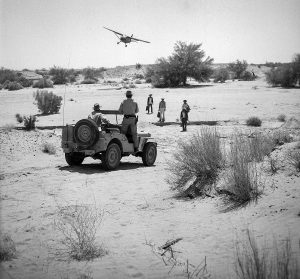
Border Patrol, just part of the j.o.b.
We often see illegal immigrants in the desert. The Arizona desert is deadly in the summer with temperatures reaching over 120 degrees. One time a group of immigrants were spotted laying down with a few waving at the plane. Border patrol was called and guided to the group. Several were within hours of death. Our pilot received a lifesaving award. Unfortunately, we are not always in time. On one survey flight our pilot spotted a body. It turned out he had been dead for a couple days. The Arizona desert can be both beautiful and deadly.
A FINE END, TO AN INTERESTING CAREER
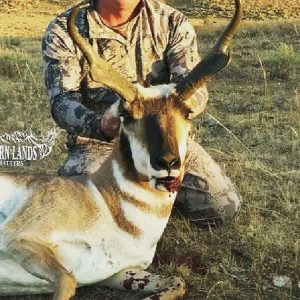
A beautiful animal, antelope occasionally die when fighting males lock horns.
My last flight before retiring from Game and Fish was an antelope survey. On our last leg we flew over two buck antelope that had been fighting, one on each side of a barb wire fence. They both were tangled in the fence and couldn’t have lived very long tangled. The WM with me called the ranch owner on his cell phone. He was able to drive out to the spot, cut one strand, and free both animals. A nice end to a wonderful career.
NOTE: Click on any photo to enlarge
About the Author
Joe Campolo Jr.
Joe Campolo, Jr. is an award winning author, poet and public speaker. A Vietnam War Veteran, Joe writes and speaks about the war and many other topics. See the "Author Page" of this website for more information on Joe.
Guest writers on Joe's blogs will have a short bio with each article. Select blogs by category and enjoy the many other articles available here.
Joe's popular books are available thru Amazon, this website, and many other on-line book stores.














I enjoyed reading of the experiences.
Gary has had an interesting life, for certain.
Excelan!
Thanks for the feedback Joyce!
Very Interesting, I think I know who Gary is…we may have gone to Tremper High. Gary has a very interesting fun and interesting.
Yes Carol, Gary went to Tremper. Good to hear from you.